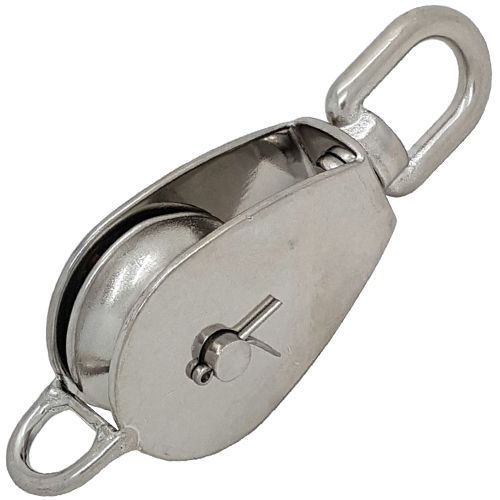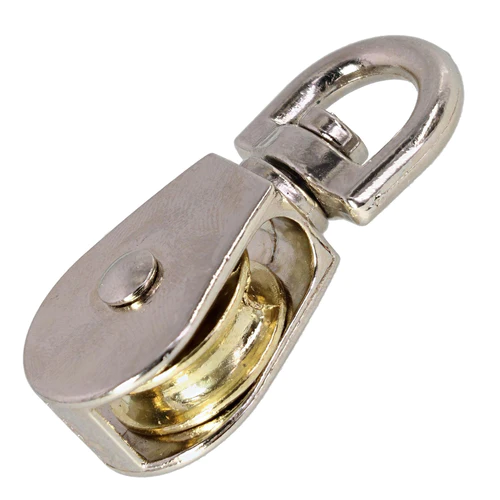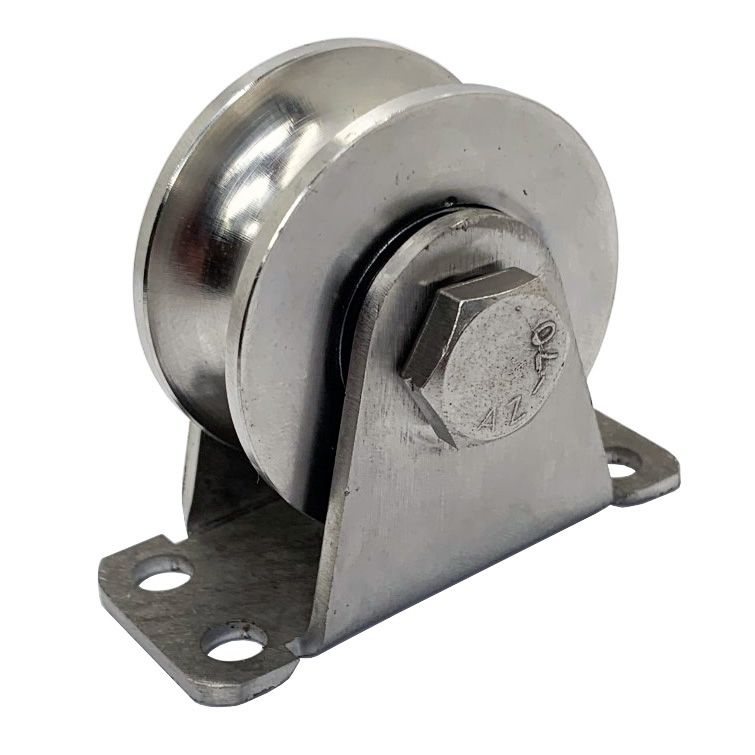Product Description
CHINAMFG Machinery offers a wide range of high quality Timing Belt Pulleys and Toothed Bars/ Timing Bars. Standard and non-standard pulleys according to drawings are available.
Types of material:
1. AlCuMgPb 6061 6082 Aluminum Timing Pulley
2. C45E 1045 S45C Carbon Steel Timing Pulley
3. GG25 HT250 Cast Iron Timing Pulley
4. SUS303 SUS304 AISI431 Stainless Steel Timing Pulley
5. Other material on demand, such as cooper, bronze and plastic
Types of surface treatment
1. Anodized surface -Aluminum Pulleys
2. Hard anodized surface — Aluminum Pulleys
3. Black Oxidized surface — Steel Pulleys
4. Zinc plated surface — Steel Pulleys
5. Chromate surface — Steel Pulleys; Cast Iron Pulleys
6. Nickel plated surface –Steel Pulleys; Cast Iron Pulleys
Types of teeth profile
| Teeth Profile | Pitch |
| HTD | 3M,5M,8M,14M,20M |
| AT | AT5,AT10,AT20 |
| T | T2.5,T5,T10 |
| MXL | 0.08″(2.032MM) |
| XL | 1/5″(5.08MM) |
| L | 3/8″(9.525MM) |
| H | 1/2″(12.7MM) |
| XH | 7/8″(22.225MM) |
| XXH | 1 1/4″(31.75MM) |
| STS STPD | S2M,S3M,S4.5M,S5M,S8M,S14M |
| RPP | RPP5M,RPP8M,RPP14M,RPP20M |
| PGGT | PGGT 2GT, 3GT and 5GT |
| PCGT | GT8M,GT14M |
Types of pitches and sizes
Imperial Inch Timing Belt Pulley,
1. Pilot Bore MXL571 for 6.35mm timing belt; teeth number from 16 to 72;
2. Pilot Bore XL037 for 9.53mm timing belt; teeth number from 10 to 72;
3. Pilot Bore, Taper Bore L050 for 12.7mm timing belt; teeth number from 10 to 120;
4. Pilot Bore, Taper Bore L075 for 19.05mm timing belt; teeth number from 10 to 120;
5. Pilot Bore, Taper Bore L100 for 25.4mm timing belt; teeth number from 10 to 120;
6. Pilot Bore, Taper Bore H075 for 19.05mm timing belt; teeth number from 14 to 50;
7. Pilot Bore, Taper Bore H100 for 25.4mm timing belt; teeth number from 14 to 156;
8. Pilot Bore, Taper Bore H150 for 38.1mm timing belt; teeth number from 14 to 156;
9. Pilot Bore, Taper Bore H200 for 50.8mm timing belt; teeth number from 14 to 156;
10. Pilot Bore, Taper Bore H300 for 76.2mm timing belt; teeth number from 14 to 156;
11. Taper Bore XH200 for 50.8mm timing belt; teeth number from 18 to 120;
12. Taper Bore XH300 for 76.2mm timing belt; teeth number from 18 to 120;
13. Taper Bore XH400 for 101.6mm timing belt; teeth number from 18 to 120;
Metric Timing Belt Pulley T and AT
1. Pilot Bore T2.5-16 for 6mm timing belt; teeth number from 12 to 60;
2. Pilot Bore T5-21 for 10mm timing belt; teeth number from 10 to 60;
3. Pilot Bore T5-27 for 16mm timing belt; teeth number from 10 to 60;
4. Pilot Bore T5-36 for 25mm timing belt; teeth number from 10 to 60;
5. Pilot Bore T10-31 for 16mm timing belt; teeth number from 12 to 60;
6. Pilot Bore T10-40 for 25mm timing belt; teeth number from 12 to 60;
7. Pilot Bore T10-47 for 32mm timing belt; teeth number from 18 to 60;
8. Pilot Bore T10-66 for 50mm timing belt; teeth number from 18 to 60;
9. Pilot Bore AT5-21 for 10mm timing belt; teeth number from 12 to 60;
10. Pilot Bore AT5-27 for 16mm timing belt; teeth number from 12 to 60;
11. Pilot Bore AT5-36 for 25mm timing belt; teeth number from 12 to 60;
12. Pilot Bore AT10-31 for 16mm timing belt; teeth number from 15 to 60;
13. Pilot Bore AT10-40 for 25mm timing belt; teeth number from 15 to 60;
14. Pilot Bore AT10-47 for 32mm timing belt; teeth number from 18 to 60;
15. Pilot Bore AT10-66 for 50mm timing belt; teeth number from 18 to 60;
Metric Timing Belt Pulley HTD3M, 5M, 8M, 14M
1. HTD3M-06; 3M-09; 3M-15; teeth number from 10 to 72;
2. HTD5M-09; 5M-15; 5M-25; teeth number from 12 to 72;
3. HTD8M-20; 8M-30; 8M-50; 8M-85 teeth number from 22 to 192;
4. HTD14M-40; 14M-55; 14M-85; 14M-115; 14M-170; teeth number from 28-216;
5. Taper Bore HTD5M-15; 8M-20; 8M-30; 8M-50; 8M-85; 14M-40; 14M-55; 14M-85;
14M-115; 14M-170
Metric Timing Belt Pulleys for Poly Chain GT2 Belts
1. PCGT8M-12; PCGT8M-21; PCGT8M-36; PCGT8M-62;
2. PCGT14M-20; PCGT14M-37; PCGT14M-68; PCGT14M-90; PCGT14M-125;
Power Grip CHINAMFG Tooth/ PGGT 2GT, 3GT and 5GT
1. 2GT-06, 2GT-09 for timing belt width 6mm and 9mm
2. 3GT-09, 3GT-15 for timing belt width 9mm and 15mm
3. 5GT-15, 5GT-25 for timing belt width 15mm and 25mm
OMEGA RPP HTD Timing Pulleys
1. RPP3M-06; 3M-09; 3M-15; teeth number from 10 to 72;
2. RPP5M-09; 5M-15; 5M-25; teeth number from 12 to 72;
3. RPP8M-20; 8M-30; 8M-50; 8M-85 teeth number from 22 to 192;
4. RPP14M-40; 14M-55; 14M-85; 14M-115; 14M-170; teeth number from 28-216;
5. Taper Bore RPP5M-15; 8M-20; 8M-30; 8M-50; 8M-85; 14M-40; 14M-55; 14M-85;
14M-115; 14M-170
| Pulley Sizes: | Timing |
|---|---|
| Manufacturing Process: | Casting |
| Material: | Iron |
| Surface Treatment: | Phosphating |
| Application: | Chemical Industry, Grain Transport, Mining Transport, Power Plant |
| Steel: | Black Oxidized |
| Samples: |
US$ 3/Piece
1 Piece(Min.Order) | |
|---|
| Customization: |
Available
| Customized Request |
|---|

How do stainless pulleys contribute to the overall longevity and maintenance cost savings of equipment?
Stainless pulleys play a crucial role in enhancing the overall longevity of equipment and reducing maintenance costs. Here’s how they contribute:
- Corrosion Resistance: Stainless pulleys are made from stainless steel alloys that exhibit excellent corrosion resistance. This resistance allows the pulleys to withstand exposure to moisture, chemicals, and environmental factors without rusting or corroding. As a result, the pulleys maintain their structural integrity over time, extending the lifespan of the equipment.
- Durability: Stainless pulleys are highly durable and can withstand heavy loads, high pressures, and repetitive motion without deforming or failing. The inherent strength of stainless steel ensures that the pulleys can endure demanding operating conditions without compromising performance. This durability contributes to the longevity of the equipment.
- Reduced Wear and Tear: Stainless pulleys are designed to provide smooth and consistent operation. The precision-engineered grooves, diameter, and surface finish of the pulleys minimize friction and wear on belts or ropes. By reducing wear and tear, stainless pulleys help preserve the integrity of the entire system, including belts, ropes, and other components, thus extending their lifespan.
- Lower Maintenance Requirements: Stainless pulleys require minimal maintenance compared to pulleys made from other materials. Their corrosion resistance eliminates the need for frequent cleaning or protective coatings to prevent rust. Additionally, stainless steel’s resistance to wear and fatigue reduces the need for frequent pulley replacements. The lower maintenance requirements result in cost savings and reduce equipment downtime.
- Compatibility with Harsh Environments: Stainless pulleys are well-suited for use in harsh environments, such as those with high humidity, temperature variations, or exposure to chemicals. The corrosion resistance and durability of stainless steel enable the pulleys to maintain their performance even under challenging conditions. This compatibility with harsh environments enhances the overall longevity of the equipment.
- Resistance to Contamination: Stainless pulleys have a smooth surface finish that resists contamination and buildup of debris or particulates. This feature reduces the risk of contaminants entering the equipment and causing malfunctions or damage. By minimizing contamination, stainless pulleys contribute to the longevity and reliable operation of the equipment.
Overall, stainless pulleys contribute to the overall longevity and maintenance cost savings of equipment through their corrosion resistance, durability, reduced wear and tear, lower maintenance requirements, compatibility with harsh environments, and resistance to contamination. By investing in stainless pulleys, equipment owners can enjoy extended equipment lifespan, reduced maintenance expenses, and increased operational efficiency.

How do stainless pulleys contribute to the overall reliability and safety of systems?
Stainless pulleys play a crucial role in ensuring the reliability and safety of various systems. Here’s how they contribute:
- Efficient Power Transmission: Stainless pulleys provide smooth and efficient power transmission in systems that involve belts, ropes, or cables. They enable the transfer of rotational motion, allowing mechanical components to work together effectively. By maintaining proper alignment and tension, stainless pulleys minimize energy loss and maximize system efficiency.
- Reduced Friction and Wear: Stainless pulleys are designed with low-friction surfaces and often incorporate bearings or bushings. These features reduce friction and minimize wear between the pulley and the moving components, such as belts or ropes. By reducing friction, stainless pulleys help increase the lifespan of the system, decrease maintenance requirements, and improve overall reliability.
- Accurate Positioning and Timing: Certain types of stainless pulleys, such as timing pulleys, enable precise positioning and synchronization in systems. They ensure accurate timing of components, such as valves, gears, or conveyor belts. This accuracy contributes to the reliable operation of the system and helps prevent issues such as misalignment or collisions.
- Load Distribution: Stainless pulleys distribute loads evenly across belts, ropes, or cables, preventing localized stress concentrations. This load distribution minimizes the risk of component failure, such as belt or rope breakage, and ensures the system can handle its intended load capacity safely.
- Enhanced Safety Features: Stainless pulleys can be customized with safety features to enhance system safety. Examples include flanges or grooves to prevent belt slippage, guards or shields to protect against accidental contact with moving parts, or anti-backlash mechanisms to prevent sudden reversals. These safety features help mitigate potential hazards and protect personnel and equipment.
- Resistance to Corrosion: Stainless pulleys are highly resistant to corrosion, even in challenging environments. This corrosion resistance ensures their longevity and reliable performance, reducing the risk of pulley failure due to degradation or rusting. Stainless pulleys are commonly used in applications subject to moisture, humidity, or exposure to chemicals.
By providing efficient power transmission, reducing friction and wear, enabling accurate positioning, ensuring load distribution, incorporating safety features, and offering corrosion resistance, stainless pulleys contribute significantly to the overall reliability and safety of systems. They help optimize system performance, minimize downtime, and enhance the longevity of the equipment.

How does stainless steel enhance the durability and corrosion resistance of pulleys?
Stainless steel enhances the durability and corrosion resistance of pulleys through its unique properties. Here’s how stainless steel achieves these advantages:
- Corrosion Resistance: Stainless steel contains chromium, which forms a thin and invisible oxide layer on the surface of the pulleys. This oxide layer acts as a protective barrier, preventing the underlying steel from coming into direct contact with corrosive agents such as moisture, chemicals, or contaminants. The oxide layer effectively resists rusting and corrosion, ensuring the longevity and performance of the pulleys even in corrosive environments.
- Durability: Stainless steel is known for its excellent strength and durability. It has high tensile strength, allowing the pulleys to withstand heavy loads, high speeds, and repetitive use without deformation or failure. The inherent strength of stainless steel ensures that the pulleys can maintain their structural integrity and performance over extended periods, making them highly durable.
- Resistance to Wear and Abrasion: Stainless steel pulleys exhibit resistance to wear and abrasion, thanks to their hardness and surface properties. The stainless steel material has a high hardness level, making it less susceptible to surface damage caused by friction or contact with abrasive materials. This wear resistance ensures that the pulleys can withstand the demands of continuous use and maintain their functional and operational integrity for a longer time.
- High Strength-to-Weight Ratio: Stainless steel possesses a high strength-to-weight ratio, meaning it provides exceptional strength while being relatively lightweight. This characteristic is advantageous for pulleys as it allows for the design of lighter and more compact pulley systems without compromising strength and load-bearing capacity. The reduced weight of stainless steel pulleys can contribute to overall system efficiency and ease of installation.
- Tolerance to Extreme Temperatures: Stainless steel pulleys can withstand a wide range of temperatures, from very high to very low. They retain their mechanical properties and dimensional stability even when exposed to extreme temperature variations. This temperature resistance makes stainless steel pulleys suitable for applications that involve heat, cold, or thermal cycling, ensuring consistent and reliable performance in diverse environments.
In summary, stainless steel enhances the durability of pulleys by providing corrosion resistance, wear resistance, high strength-to-weight ratio, and tolerance to extreme temperatures. These properties make stainless steel pulleys highly reliable and long-lasting, even in demanding industrial applications.


editor by CX
2023-09-25